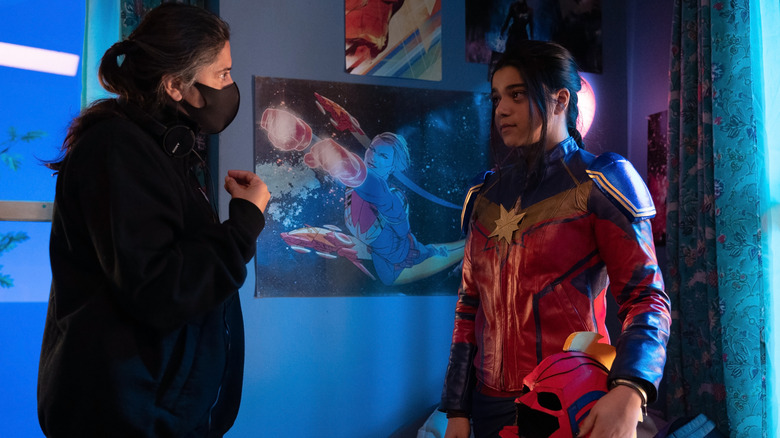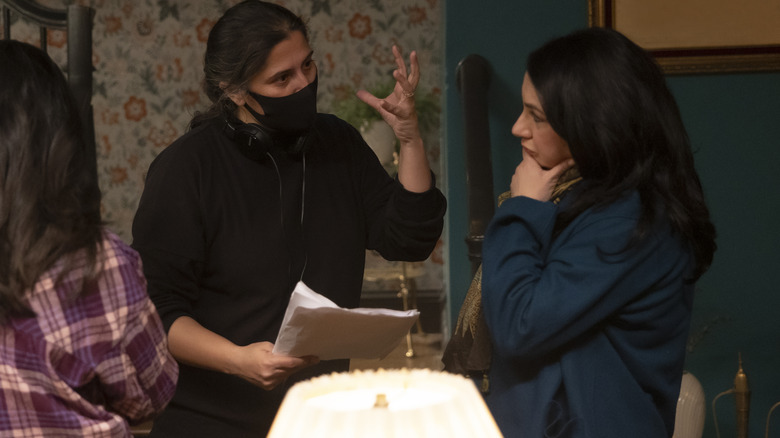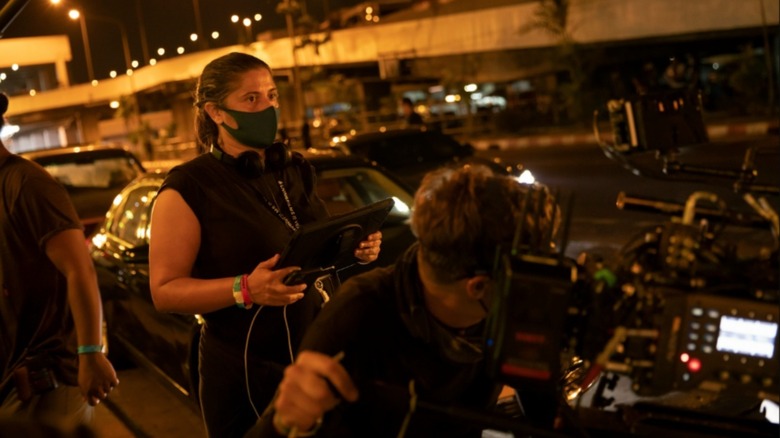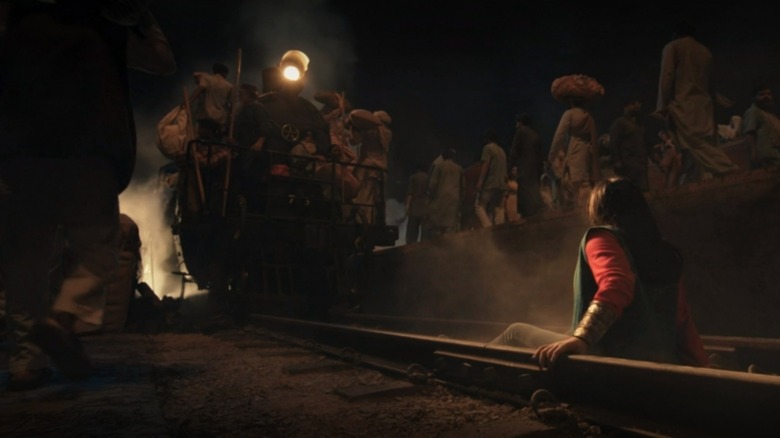Ms. Marvel Director Sharmeen Obaid-Chinoy On Recreating Photographs Of Partition And Avoiding The Yellow Filter [Interview]
Of all the filmmakers to ever have a hand in bringing the various Marvel television shows to life, director Sharmeen Obaid-Chinoy might have the most fascinating story of them all. Born in Karachi, Pakistan, Obaid-Chinoy once explained how she took the anger she felt towards the injustice all around her and channeled it into writing. She officially entered the field of journalism at the age of 14, eventually leading her into undercover work as an investigative journalist only three years later. Ultimately, the passionate storyteller would end up making several documentaries that explore the lesser-known plight of Pakistanis: The rise of fundamentalist extremism in parts of her native country, a plastic surgeon who specializes in caring for victims of acid attacks, and shining a light on Pakistan's oppressive judicial system, to name a few.
As an activist, a TED Talk speaker, and an Academy Award-winning documentarian, it might not seem like her natural next step would be a directing stint on a Disney+ series, but those most familiar with her work would not be surprised to find out that she lobbied hard to direct episodes of "Ms. Marvel." Throughout the course of my eye-opening conversation with Obaid-Chinoy over Zoom, the acclaimed filmmaker explained what drew her to the story of Kamala Khan in the first place, going out of her way to avoid normalizing the dreaded yellow filter that Westerners use to depict foreign countries, and the painstaking process of recreating actual photos from Partition when Kamala ends up in 1947 at the end of episode 4.
'I was going to open up the world to a very different kind of superhero'
You got your start in investigative journalism, documentary filmmaking, and you've even worked in the world of animation before. I have to ask, how do you go from that to pretty much the biggest blockbuster franchise on the planet right now?
[Laughs] I've always told stories in different mediums. I've dabbled in so many different mediums, and I've always told stories that matter. I've always talked about men and women in their own right as superheroes in our communities. They're just working without capes. And so, when the story of Kamala Khan came up, I began to think about how I wanted to throw my hat in the ring because in telling her story, I was going to open up the world to a very different kind of superhero. A culture and a family, an immigrant family, that I knew would move millions of people around the world who would see a reflection of themselves in the Khan family and in Kamala Khan. So I really wanted to be part of it.
I decided that what better way to do it than to go and pitch to Kevin Feige. And so that's what I did. I pitched to a room full of people. Kevin, [producer Louis D'Esposito], Victoria [Alonso], Bisha Ali was there, and Jenna Berger was there. I pitched my vision and sort of what I wanted Kamala's adventure to look and feel like. And next thing I knew, I was calling "action" [laughs].
'I told my team that there would be no yellow in my episodes'
With the exception of, I think, three scenes, the entirety of this latest episode takes place in Karachi. As someone born there, I know you filmed in Thailand, but did that take any special significance for you?
Of course. I mean, you tell a filmmaker that she can recreate her hometown for the MCU? And so I literally took all my favorite restaurants, and I took all the places that I wanted her to experience. I wanted to put her on the streets. And the production designer, the art director, the props, the vehicles people, the costume designers, we all worked together in recreating Karachi on the streets of Bangkok. And then we did a few pick-up shoots in Karachi. And voila, you feel like you're in Karachi [laughs].
I'm frequently impressed by the color in this show, but in other TV shows and even movies, they use a lot of yellow filter to depict any scene set in either South America, the Middle East, or especially South Asia. I've noticed I haven't seen a hint of that in "Ms. Marvel" to this point. Was that something that the creative team, in general, consciously wanted to avoid on this show?
On day one, after I signed my contract, I told my team that there would be no yellow in my episodes, and there would be no yellow in general because my world is not yellow. It is green and pink and red and orange, and that's what I want the world to experience. And when you bring authentic storytellers who are rooted from that part of the world to tell a story, you will notice a visual difference in the way the story is told. "Ms. Marvel" is so special because the storytellers come from very different parts of the world. They bring with them experiences that are so important in telling that story.
'I wanted to recreate those photographs frame-by-frame when Kamala lands in Partition'
I know this mostly applies to next week's episode but even at the end of this one, getting to Partition and showing the horrors of what happened: Did you feel, because of your background, because of your documentary work, that you were more uniquely suited to portray these events in this episode and in the upcoming one?
I have spent the better part of two decades collecting oral histories about 1947. It is something that speaks to me. And so when this episode was given to me, I thought about how I wanted to take authentic oral histories, and I wanted to take photographs from that time. And I wanted to recreate those photographs frame-by-frame when Kamala lands in Partition. And so when she walks onto the platform, I worked with Jules [O'Loughlin] my DOP, in taking each one of those frames and sort of recreating them so that Kamala is catching frenetic conversations, and she's bearing witness to this history. And in that moment, she's Kamala Khan, not a superhero.
On a lighter note, you also get to handle a lot of action and even different kinds of action in this episode. What was your favorite part of the production? What was the most challenging part? What was your experience like?
Well, our chase is shot over six blocks in Thailand. And so, I worked with the production designer and some of the team, and I was like, "Okay, all six streets have to look different, you know? [Laughs] And you have to sort of recreate this world." And then [second unit director] Gary Powell and I sort of talked about how we wanted to use the environment, to use the trucks and the push carts and the soda trucks and, sort of, six people on a bike. You know, how we wanted to use the environment as an obstacle course for Kamala and the Clandestines to run through. And that was the most fun that we had. Everything that I wanted to happen, I put my wish list together, and we made it happen.
New episodes of "Ms. Marvel" stream on Disney+ every Wednesday.



